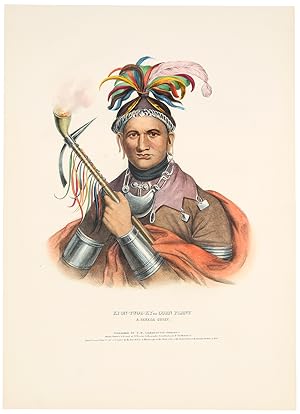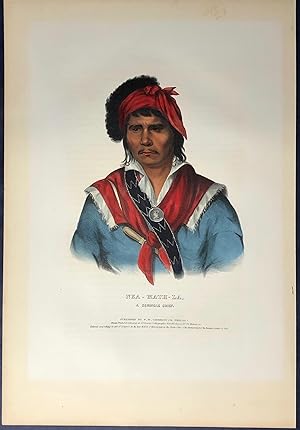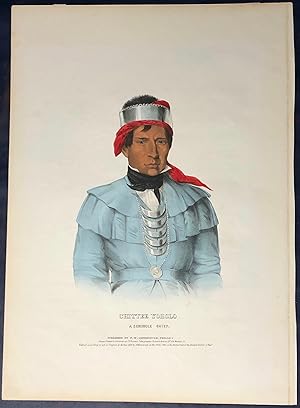philadelphia f w greenough (8 results)
FeedbackSearch filters
Product Type
- All Product Types
- Books (5)
- Magazines & Periodicals (No further results match this refinement)
- Comics (No further results match this refinement)
- Sheet Music (No further results match this refinement)
- Art, Prints & Posters (3)
- Photographs (No further results match this refinement)
- Maps (No further results match this refinement)
- Manuscripts & Paper Collectibles (No further results match this refinement)
Condition Learn more
- New (No further results match this refinement)
- As New, Fine or Near Fine (No further results match this refinement)
- Very Good or Good (5)
- Fair or Poor (1)
- As Described (2)
Binding
Collectible Attributes
- First Edition (1)
- Signed (No further results match this refinement)
- Dust Jacket (1)
- Seller-Supplied Images (5)
- Not Print on Demand (8)
Language (1)
Free Shipping
- Free Shipping to United Kingdom (No further results match this refinement)
Seller Location
Seller Rating
-
Pinnock's Improved Edition of Dr. Goldsmith's History of England from the Invasion of Julius Caesar to Death of George II with a Continuation to the Year 1832
Published by F. W. Greenough, Philadelphia, 1938
Seller: The Red Onion Bookshoppe, Hanover, IN, U.S.A.
£ 7.68
Convert currency£ 27.60 shipping from U.S.A. to United KingdomQuantity: 1 available
Add to basketHardcover. Condition: Poor. Book is very worn, stained, and well used. As is!!!! ********READING COPY********.
-
Pinnock's Improved Edition of Dr. Goldsmith's History of England, from the Invasion of Julius Caesar to the Death of George II. With a Continuation to the Year 1832
Published by F. W. Greenough, Philadelphia, 1838
Seller: John and Tabitha's Kerriosity Bookshop, Minneapolis, MN, U.S.A.
£ 24.30
Convert currency£ 31.83 shipping from U.S.A. to United KingdomQuantity: 1 available
Add to basketCondition: Good. Later Edition. Cloth over boards, rubbing to all corners and fraying from the cloth. Some pages loose but still tied in partially. Sporodic foxing, some darker, but all pages legible. Engravings of historical scenes throughout.
-
A Treatise on the Elements of Algebra; (Period American Binding)
Published by F. W. Greenough, Philadelphia, 1839
£ 57.85
Convert currency£ 20.22 shipping from U.S.A. to United KingdomQuantity: 1 available
Add to basket1/4 leather. Condition: Good+. 2nd American edition. Millersville; Equations; 12mo 7" - 7½" tall; 224 pages; Viii, (9) -224, 36 pp. What is unusual and striking about the book is the 1/4 leather period binding, with ornate rose cloth boards, blind embossed with a pattern of floral vines. It is a very unusual American binding for a school book of this period. Externally bright and neat with just mild shelf bumping to board tips. Regrettably missing the front endpapers, along with a 1" x 2" chip from the top corner of the title page, causing a loss of the letters "TISE" from "Treatise". Excisions of front matter likely undertaken to remove prior ownership inscriptions. Contents snugly bound with mild scattered toning and foxing to the page stock. Bound in at rea is the publisher's 36 page catalog of "Valuable school books". G++ to VG-.
-
PADDY-CARR CREEK INTERPRETER
Published by F W Greenough, Philadelphia, 1836
Seller: Terra Firma Books, San Diego, CA, U.S.A.
£ 732.77
Convert currency£ 21.72 shipping from U.S.A. to United KingdomQuantity: 1 available
Add to basketSoft cover. Condition: Very Good. ORIGINAL! 11x16"/28x41cm). Small blemish in black space.
-
Ki-On-Twog-Ky, or Cornplant
Published by F. W. Greenough, Philadelphia, 1838
Seller: Donald A. Heald Rare Books (ABAA), New York, NY, U.S.A.
Art / Print / Poster
£ 925.61
Convert currency£ 26.21 shipping from U.S.A. to United KingdomQuantity: 1 available
Add to basketHand-coloured lithograph by J. T. Bowen after a painting by Charles Bird King. In excellent condition. A fine image from McKenney and Hall's 'Indian Tribes of North America': `One of the most important [works] ever published on the American Indians' (Field),` a landmark in American culture' (Horan) and an invaluable contemporary record of a vanished way of life. The son of a Seneca mother and the Dutch(or possibly Irish) trader John Abeel or O'Bail, Kiontwogky (now Kaintwakon) or Cornplanter was one of three principal leaders of the Iroquois Confederacy of Six Nations and a renowned Seneca war chief who fought in the French and Indian War (1754-1763). In opposition to Joseph Brant's insistence that the Confederacy ally itself with the British in the American Revolution, Cornplanter, like Red Jacket, favored neutrality, claiming that the war was a white man's affair in which they shouldn't intervene. Despite his initial protestations and the uncustomary dissension among the members of the Grand Council regarding the issue of participating in the war, the Seneca eventually yielded to majority opinion and agreed to fight for the British. At the end of the war, after several victories and a serious defeat, Cornplanter became a diplomatic mediator between the Seneca and the whites, negotiating auspicious terms for his nation. He was on friendly terms with George Washington, who tried to use him as a diplomatic representative to troublesome tribes in Ohio. (His people refused to let him go). As time went on he became increasingly unpopular among the Seneca after signing treaties at Fort Stanwix (1784), Fort Harmar (1789), and Genesee (1797), which ceded tracts of their ancestral homelands to the Federal government, becoming New York State. Although his conciliatory actions earned him the contempt of his nation and political rivals such as Red Jacket, he obtained the appreciation of the U.S. government, which, in return for his cooperation in the Genesee treaty, awarded him an annual pension and a plot of land in Pennsylvania. In 1786, he traveled to Philadelphia to attend a ceremony given by the Tammany Society, an organization devoted to synthesizing European and Native American culture, and then went to New York to meet with Congress regarding the distribution of Iroquois lands. Cornplanter later journeyed to Washington to visit President Jefferson in 1801-2, and, later, despite his depleted authority, rallied the Seneca to the American cause in the War of 1812. McKenney and Hall's 'Indian Tribes of North America' has long been renowned for its faithful portraits of Native Americans. The portraits are largely based on paintings by the artist Charles Bird King, who was employed by the War Department to paint the Indian delegates visiting Washington D.C., forming the basis of the War Department's Indian Gallery. Most of King's original paintings were subsequently destroyed in a fire at the Smithsonian, and their appearance in McKenney and Hall's magnificent work is thus our only record of the likenesses of many of the most prominent Indian leaders of the nineteenth century. Numbered among King's sitters were Sequoyah, Red Jacket, Major Ridge, Keokuk, and Black Hawk. After six years as Superintendent of Indian Trade, Thomas McKenney had become concerned for the survival of the Western tribes. He had observed unscrupulous individuals taking advantage of the Native Americans for profit, and his vocal warnings about their future prompted his appointment by President Monroe to the Office of Indian Affairs. As first director, McKenney was to improve the administration of Indian programs in various government offices. His first trip was during the summer of 1826 to the Lake Superior area for a treaty with the Chippewa, opening mineral rights on their land. In 1827, he journeyed west again for a treaty with the Chippewa, Menominee , and Winebago in the present state of Michigan. His journeys provided an unparalleled opportunity to become ac.
-
Chittee Yoholo, A Seminole Chief
Published by F. W. Greenough, Philadelphia, 1838
Seller: William Chrisant & Sons, ABAA, ILAB. IOBA, ABA, Ephemera Society, Fort Lauderdale, FL, U.S.A.
First Edition
£ 424.24
Convert currency£ 44.93 shipping from U.S.A. to United KingdomQuantity: 1 available
Add to basketI. T. Bowen (illustrator). First Edition. Untrimmed original gilt-edged folio leaf of Chittee Yoholo (The Snake that makes a Noise). Drawn, printed and colored by I. T. Bowen. A clean, bright example (see image).
-
NEA-MATH-LA, A Seminole Chief. Folio, Hand-Colored Lithograph, from History of the Indian Tribes of North America, with Biographical Sketches and Anecdotes of the Principal Chiefs
Published by Philadelphia: F. W. Greenough, 1836
Seller: Moroccobound Fine Books, IOBA, Lewis Center, OH, U.S.A.
Association Member: IOBA
Art / Print / Poster
£ 462.80
Convert currency£ 43.77 shipping from U.S.A. to United KingdomQuantity: 1 available
Add to basketNo Binding. Condition: Good. Folio, measuring 20 x 14 inches. Light toning from matting; scattered light foxing in the margins not affecting illustration; some offsetting from text on the verso lightly appearing on the recto; minor tape remnants on the top verso; otherwise very bright colors and a handsome image.
-
CHITTEE YOHOLO a Seminole Chief. Folio, Hand-Colored Lithograph, from History of the Indian Tribes of North America, with Biographical Sketches and Anecdotes of the Principal Chiefs
Published by Philadelphia: F. W. Greenough, 1838
Seller: Moroccobound Fine Books, IOBA, Lewis Center, OH, U.S.A.
Association Member: IOBA
Art / Print / Poster
£ 462.80
Convert currency£ 43.77 shipping from U.S.A. to United KingdomQuantity: 1 available
Add to basketNo Binding. Condition: Good. Folio, measuring 20 x 14 inches. Light toning in the margins; tape remnants at the top of the verso; right edge a bit ragged from removal; otherwise very bright colors and a handsome image.







